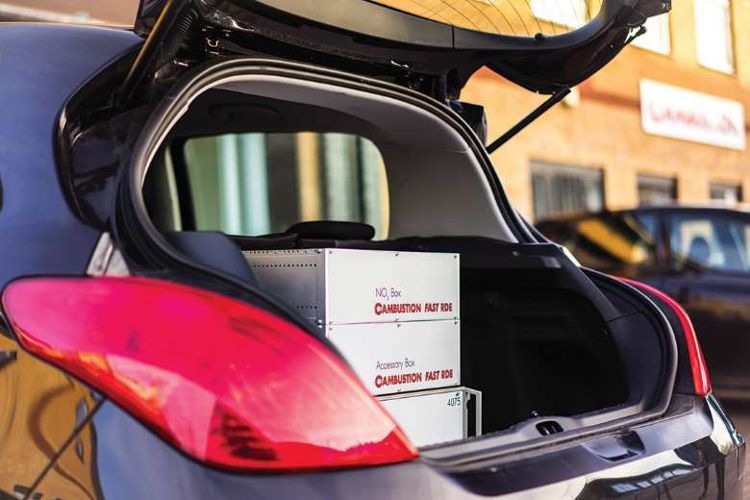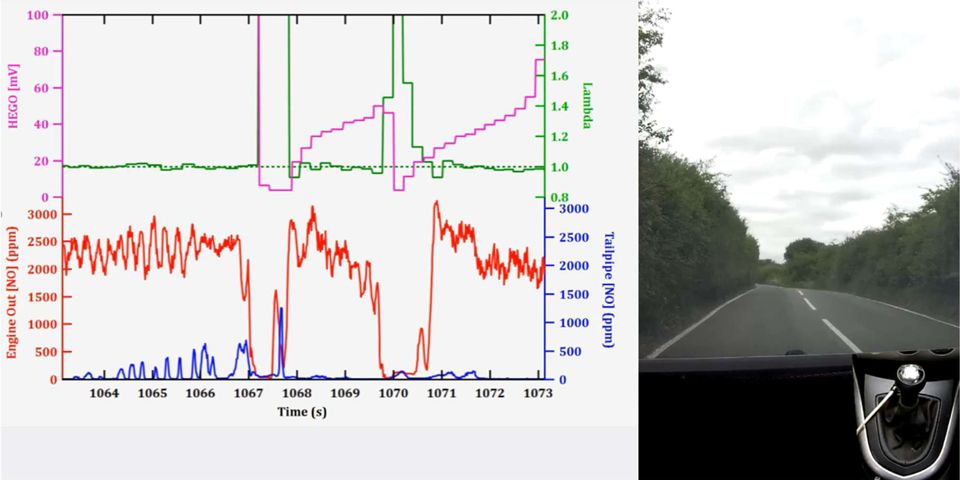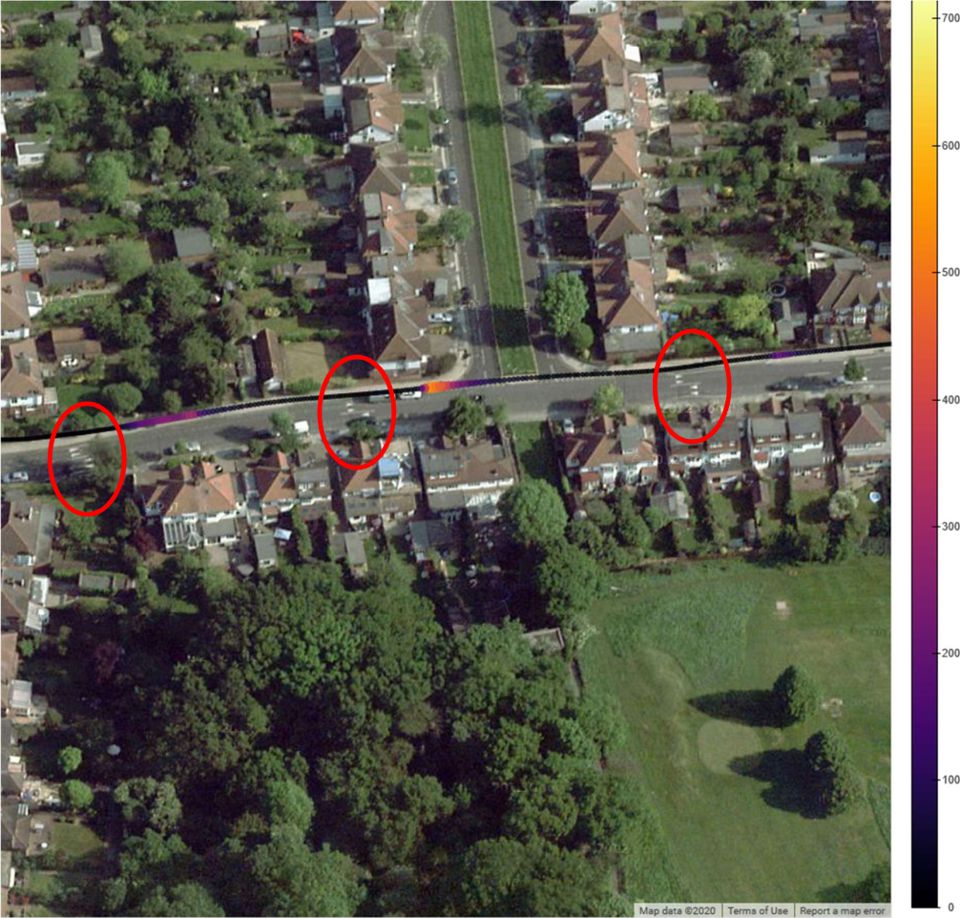Feature: On-board measurement of very fast tailpipe transients
23 May 2020
Real World Driving Emissions has proved challenging for the industry not just because of the deviation from well-known speed/load points, but for the inclusion of unpredictable transients within uncontrolled ambient conditions. Since the introduction of emissions control measures in the 1970s, it has been appreciated that catalyst systems can operate extremely effectively under favourable steady state conditions. On the other hand the transient driving conditions inherent in the real world associated with stop/start traffic, urban “obstacles” such as traffic signals, junctions and roundabouts can produce “spikes” of emissions of duration ≪1 second—much faster than can be fully resolved by standard Portable Emissions Measurement System (PEMS) equipment.
Cambustion began developing fast response emissions analyzers in 1987 and have adapted their fast NOx, HC and CO & CO2 analyzers for on-board measurements which requires a size, weight and power reduction whilst retaining two channel capabilities (to allow for simultaneous engine-out and tailpipe measurements).
The resulting equipment has a T10-90% response time of 10 milliseconds, weighs about 65 kg, is powered from 12V and can easily be reconfigured by the user for either on-board or lab-based measurements (see Figure 1).

The data available from the equipment reveals very fast transient features which would not be discernible from standard PEMS equipment nor from standard lab emissions benches. A good example is can be seen in Figure 2 from a gasoline vehicle during accelerations and gear changes showing the effect of the closed loop AFR control and the associated NOx breakthrough to the tailpipe during each of the oscillation lean excursions.

Combining the fast response emissions with accurate GPS location allows for analysis of precisely where emissions are being deposited.
Some recent tests around Transport for London’s “West London route” show the dramatic reduction in diesel NOx emissions with newer vehicle. For simplicity, the data shown in Figure 3 compares the tailpipe NOx emissions from three vehicles of different Euro emissions classifications around this 55 km route.

The GPS data showing the location of these emissions indicate that the few remaining incidents of NOx emissions from the modern SCR-equipped diesel passenger vehicle are confined to rapid transients.
The engine’s ECU data and some independent exhaust K-type thermocouples show that the slow, congested driving through London is punctuated by sudden rapid accelerations as is typical during normal urban driving. The cold exhaust temperatures due to low engine loads mean that the SCR system is challenged by the spike of engine-out NOx when pulling away from lights or negotiating lane changes in busy traffic conditions.
The transients associated with speed bumps in residential areas also show up clearly in Figure 4. They can also be seen in the following YouTube video.

SCR-equipped buses have also been studied in association with Oxford University, Oxford Bus Company and Oxford City Council. They are of particular interest because they have access to clean air zones but are also subject to frequent transients including bus stop manoeuvres.
One of the buses studied was Euro VI OEM SCR-equipped and was studied while in service with passengers.

A real time plot of a single bus stop manoeuvre is available from YouTube.
With all ICE-powered vehicles, sudden transients are a problem – especially those which are encountered after some cold, sluggish driving conditions. The data available from fast emissions analyzers when viewed alongside ECU, GPS and thermocouple data can provide valuable insights in to when, where and why such spikes of emissions occur. The driving conditions can be “replayed” under controlled lab conditions to calibrate out emissions spikes and continue to drive diesel emissions downwards.
A series of webinars are available, including one by the author describing diesel applications of Cambustion’s fast response analyzers including transient NOx, EGR and cold start measurements.
In addition to the aforementioned fast gas analysers, Cambustion offer a particle size distribution analyser, the DMS500, capable of measuring particles from 5nm up to 2.5μm with an industry-leading 200 milliseconds T10-90% response time. This instrument has been used for engine calibration and particulate filter evaluation since its invention in 2002. This is now available with a Catalytic Stripper Accessory for solid particle number measurements.
More information can be found in:
- Duckhouse, M.P.G.; Peckham, M.; Bradley, H.; Irwin, M.; Hammond, M. On Board Fast Measurement of Vehicle NOx Emissions. SAE Technical Paper 2018- 01-0646.
- Irwin, M.; Bradley, H.; Duckhouse, M.; Hammond, M.; Peckham, M.S. High spatio-temporal resolution pollutant measurements of on-board vehicle emissions using ultra-fast response gas analyzers. Atmos. Meas. Tech. 2018, 11, 3559–3567.
- Leach, F.C.P.; Peckham, M.S.; Hammond, M.J. Identifying NOx Hotspots in Transient Urban Driving of Two Diesel Buses and a Diesel Car. Atmosphere 2020, 11, 355.
Contact the author: Mark Peckham, msp@cambustion.com, www.cambustion.com